Technical differences between BI systems (Power BI, Qlik Sense, Tableau)
The time required to read 11 minutes
The purpose of this article is to compare the three leading BI platforms that are among the leaders of the Gartner quadrant:
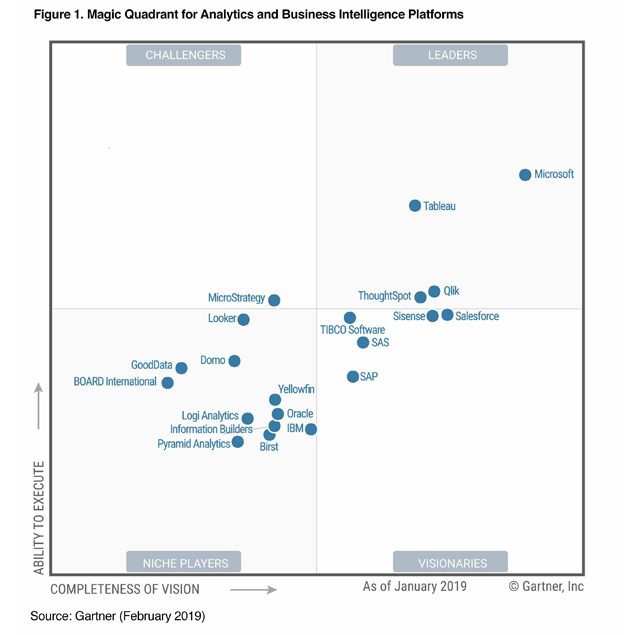
Figure 1. Gartner BI Magic Quadrant 2019
My name is Zhdanov Andrey, I am the head of the analytics department at Analytics Group. We build visual reports on marketing, sales, finance, logistics, in other words, we are engaged in business analytics and data visualization.
')
I have been working with various BI platforms for several years with my colleagues. We have a very good project experience, which allows us to compare platforms from the point of view of developers, analysts, business users and implementers of BI systems.
We will have a separate article comparing prices and visual design of these BI systems, so here we will try to evaluate these systems from the point of view of the analyst and the developer.
We will single out several directions for analysis and estimate it on a 3-point scale:

I saw a lot of Power BI users who were not IT specialists, but could create a nice report. Power BI uses the same query language as Excel — Power Query and the DAX formula language. Many analysts are well aware of Excel, so it’s pretty easy for them to switch to this BI system.
Most actions are not difficult enough to be performed in the query editor. Plus there is an advanced editor with the M language for professionals.
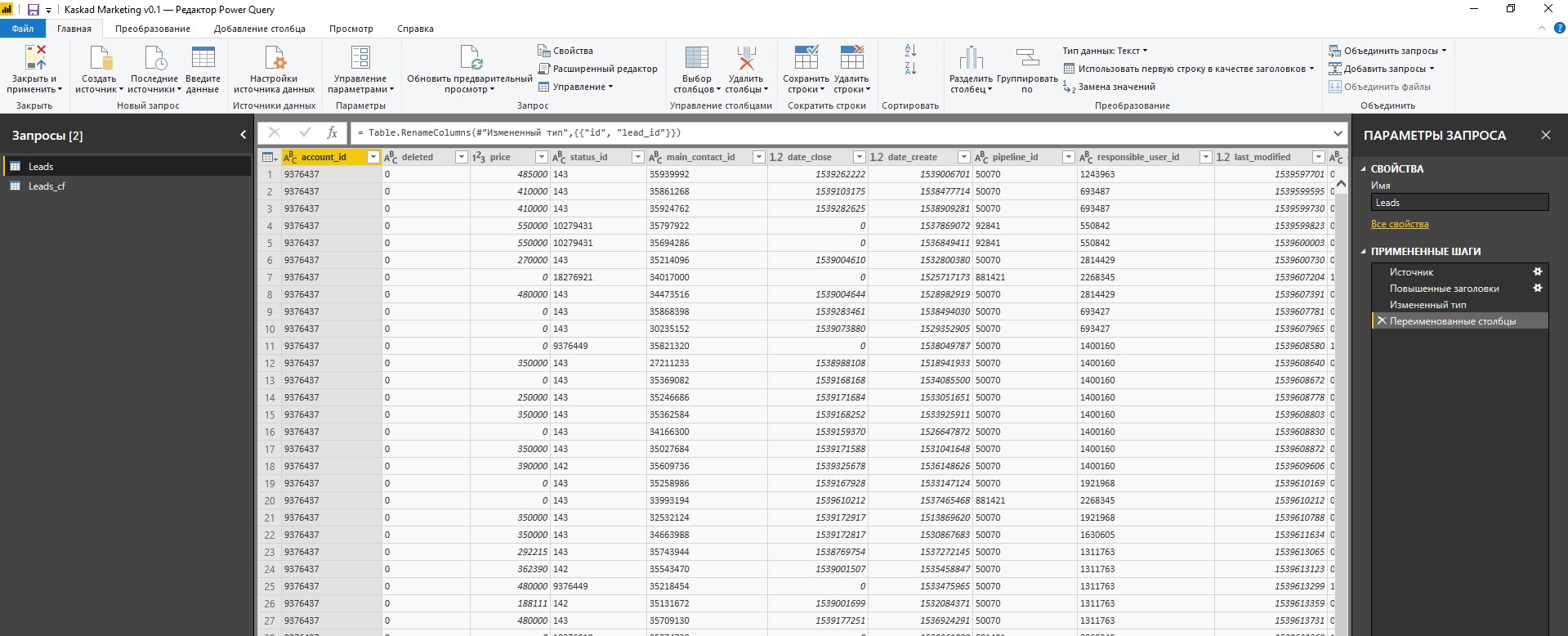
Figure 2. Power BI Query Designer
Qlik Sense looks very friendly - a small number of settings, a quick opportunity to create a report, you can use the data load designer.
At first, it seems simpler than Power BI and Tableau. But from experience I will say that after a while, when the analyst creates a couple of simple reports and he needs something more complicated, he will be faced with the need to program.
Qlik has a very powerful language for loading and processing data. There is own set analysis formula language. Therefore, the analyst should be able to write queries and connections, place data in virtual tables, actively use variables. The possibilities of the language are very broad, but it will require its study. Probably all Qlik analysts that I know have some serious IT background.
Qlik integrators, like us, often like to talk about the associative model, when loading data all fit into RAM, and the connection between the data is performed by the platform’s internal mechanism. With the selection of values, internal subqueries are not produced, as in classical databases. Data is provided almost instantly due to pre-indexed values and relationships.
True in practice, this leads to the creation of automatic joins of tables, with the coincidence of field names. For example, you can not have different tables without links, which will have the same field. It is necessary to get used to this. It is necessary either to rename the columns and make sure that the names do not match, or to reduce all the fact tables into one and surround them with directories of the “star” type. Likely for beginners it is convenient, and experienced analysts have no difference.
A typical interface for loading and processing data for analytics looks like this.

Figure 3. Qlik Sense Data Download Editor, Calendar table
Note: In Power BI, the situation usually looks different; you leave different fact tables and reference books; you can manually join the tables in the classical way, i.e. I map the columns to each other manually.
Tableau developers are positioning as a BI with a convenient and user-friendly interface that will allow the analyst to independently explore their data. Yes, we had analysts in our company who, without IT experience, could make their reports. But I will lower the assessment of Tableau for several reasons:
- Weak localization with the Russian language
- Tableau Online servers are not in RF
- A fairly simple download constructor starts causing problems when you need to build a rather complex data model.

Figure 4. Tableau data load constructor
One of the questions we ask at the interview for Tableau analysts is “How to build a model of fact tables with reference tables without putting everything in a single table?” Data Blending requires thoughtful use. I have many times corrected data duplication errors for my analysts after such associations.
Plus, Tableau has a rather peculiar system, when you make each schedule on a separate sheet of Sheet, and then create a Dashboard, where you start to place the created sheets. Then you can create a Story, a combination of different Dashboard. Development in Qlik and Power BI in this regard is simpler, you immediately put graph templates on a sheet, set measures and measurements, and the Dashboard is ready. It seems to me that labor costs for training in Tableau are increasing.

There is no clear leader in this section, but we will highlight Qlik due to a couple of nice features.
Tableau in the free version is limited in sources, but in our articles we focus more on business, and business can afford commercial products and analysts. Therefore, Tableau did not lower the estimate for this parameter.
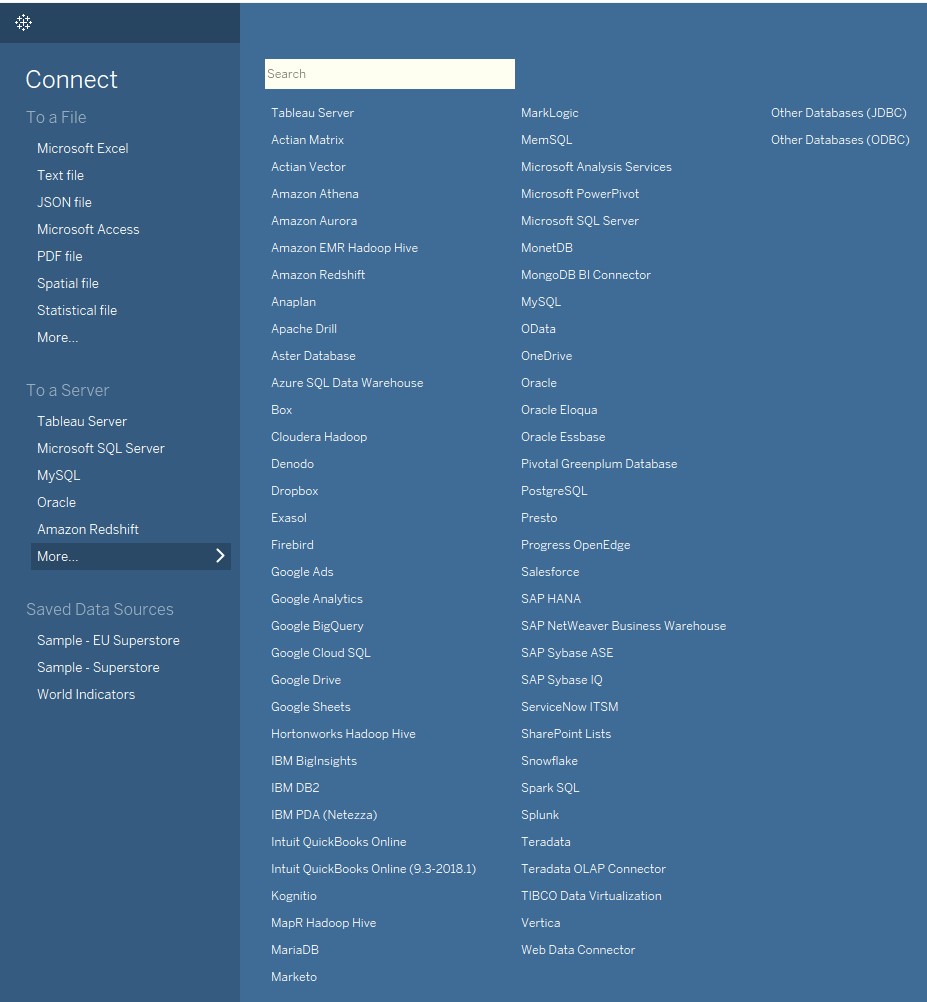
Figure 5. A list of possible Tableau sources
Otherwise, the list of sources is impressive everywhere - all table files, all standard databases, web connections, everything works everywhere. I did not come across non-standard data storages, there may have some nuances, but in most cases you will not have problems loading data. Exception, perhaps only 1C. There are no direct connectors to 1C.
Qlik partners in Russia sell their own connectors for 100,000 - 200,000 rubles, but in most cases it is cheaper to make 1C uploads to FTP to Excel or a SQL database. And you can publish the 1C database on the web and connect to it using the Odata protocol.
PowerBI and Tableau can do it as standard, but Qlik will be asked for a paid connector, so it's also easier to upload to an intermediate database here. In any case, questions all questions on connections can be solved.
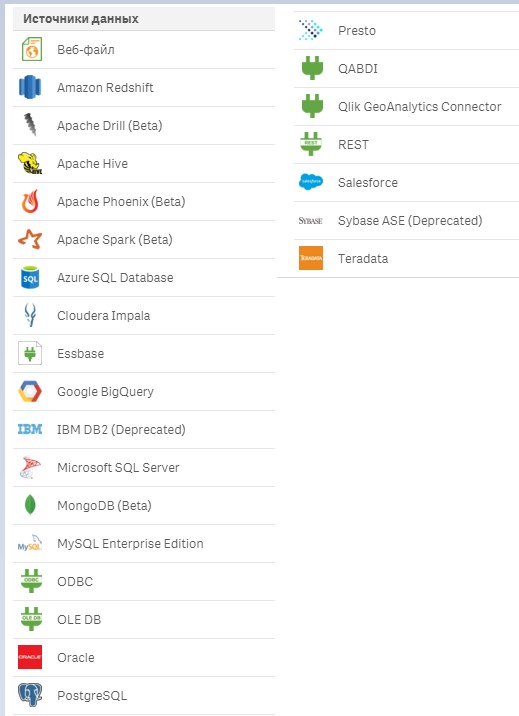
Figure 6. A list of possible sources of Qlik Sense
In addition, it is worth noting the feature of Qlik that they deliver both paid and free connectors as a separate product.
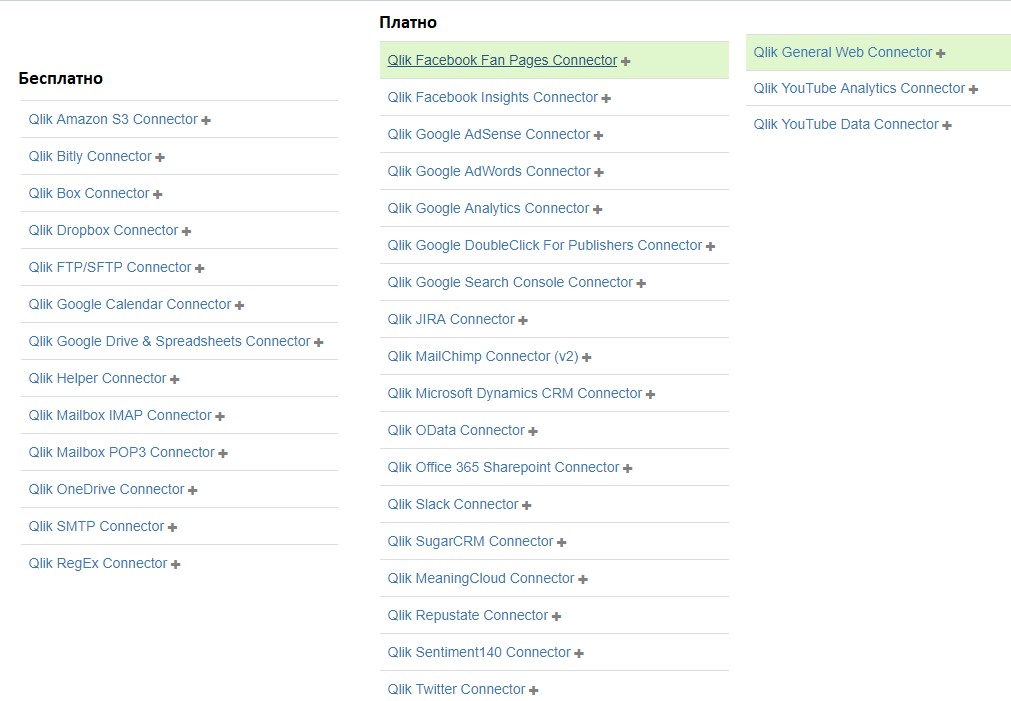
Figure 7. Additional Qlik Sense connectors
From experience I will add that with large amounts of data or numerous sources it is not always advisable to connect immediately a BI system. In serious projects, a data warehouse, a database with data already prepared for analysis, etc. are usually used. You can not take and unload say, 1 billion records in the BI system. There is already a need to think through the solution architecture.
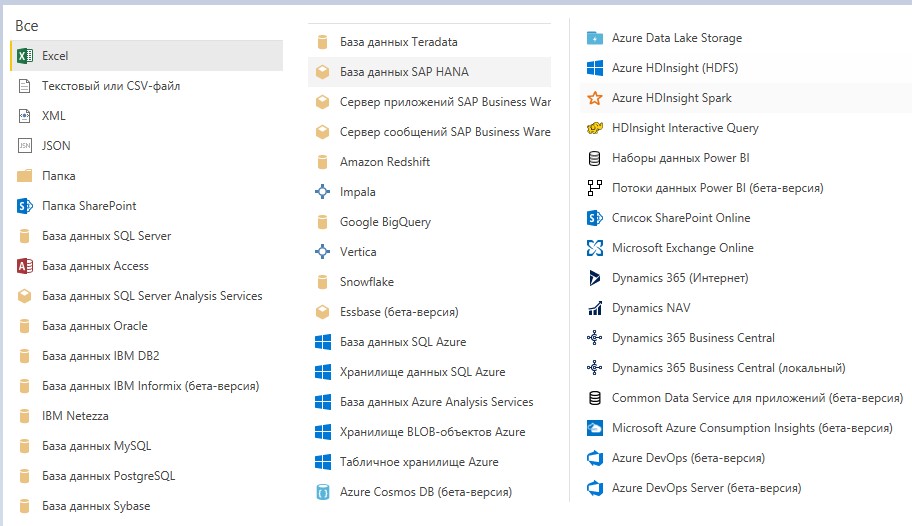
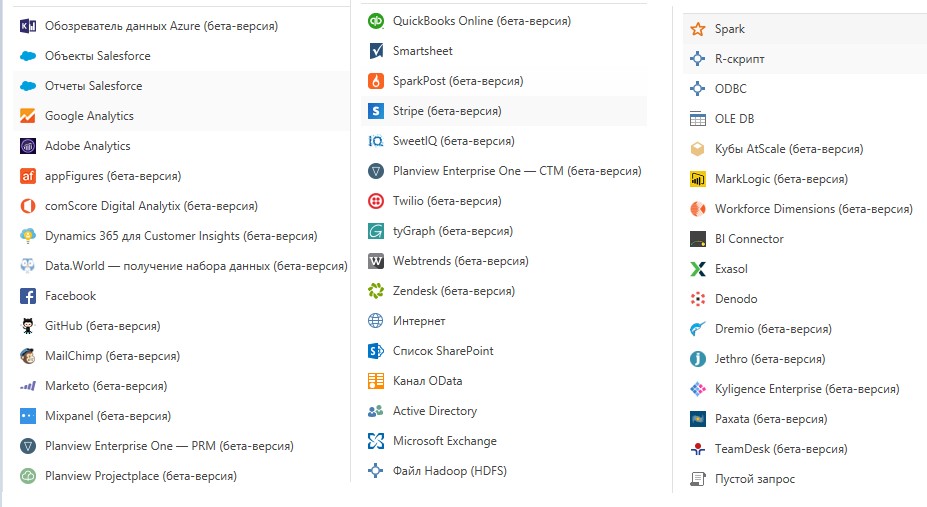
Figure 8. Power BI data sources
But why did you allocate Qlik? I really like 3 things:
- QVD files
Own data storage format. Sometimes you can build serious commercial projects only on QVD files. For example, the first level is raw data. The second level is the processed files. The third level is aggregated data, etc. These files can be used in different applications, they can be responsible for different employees and services. Download speed from such files is ten times faster than from normal data sources. This allows you to save on the database and share information between different Qlik applications.
- Incremental data loading
Yes, Power BI and Tableau can also do this. But Power BI will require an expensive Premium version, and Tableau doesn’t have the same flexibility as Qlik. In Qlik on QVD files, you can take system snapshots at different times and then process this data as you please.
- Connect external scripts
In addition to QVD files for data storage, in Qlik script code can also be taken out of the application and included with the Include command. This allows you to organize team work, use version control systems, manage a single code for different applications. Power BI has an advanced query editor, but we didn’t manage to configure such a teamwork as in Qlik. In general, all BI have problems with this; it is simply impossible to manage data, code, and visualizations in all applications simultaneously from a single place. The maximum that we managed to do was to render the QVD files and script code. Visual elements have to be edited within the reports themselves, which does not allow us to massively change the visualization of all clients at the same time.
But what about such a mechanism as Live connection? Tableau and Power BI support a LIVE connection to a number of sources, unlike Qlik. We treat this feature rather indifferently, since Practice shows that when it comes to big data, working with a LIVE connection becomes impossible. And BI is in most cases necessary for big data.

In this section I have 2 leaders, Qlik Sense and Power Bi.
Let's just say Qlik is powerful, but difficult. Understand their SQL in a similar language and you can do almost everything — virtual tables, joins and join tables, loop through the table and generate new tables, a bunch of row processing commands. For example, a field in 1 cell that is clogged with data like “Ivanov 851 White” on the fly can be decomposed not only into 3 columns (as everyone can do), but also into 3 lines at once, for example. The same on the fly to make combining 3 lines into 1 is also easy.
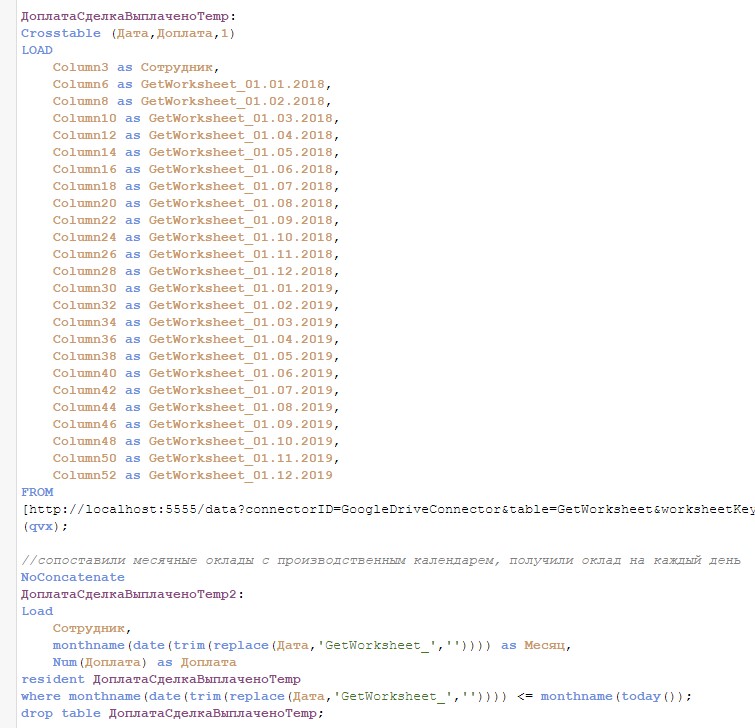
Figure 9. How to load and transpose a table into Qlik Sense from Google Sheets
Power BI in this regard seems simpler, but most of the tasks are easily solved through the query designer. He set a number of parameters, transposed the table, worked on the data, and all this without a single line of code.
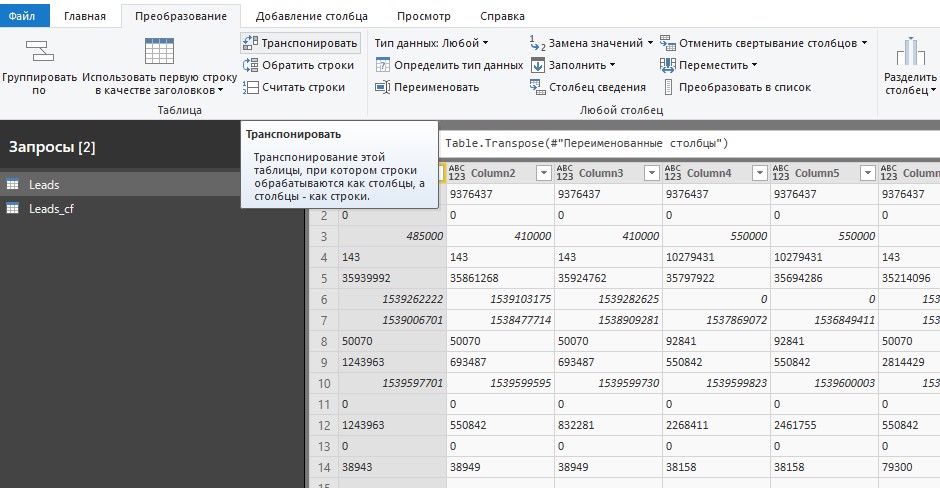
Figure 10. How to load and transpose a table in Power BI from AmoCRM
Tableau seems to me to have a different ideology. They are more for beauty and design. Connect a bunch of different sources, combine them all and handle inside Tableau seems to me very difficult. In commercial projects, in most cases, Tableau already prepares and accumulates data in storages and databases.
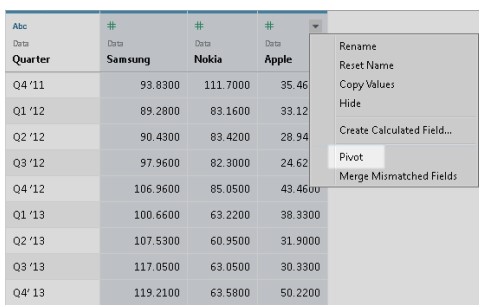
Figure 11. How to load and transpose a table in Tableau

In this section, we did not select a leader. We will have a separate article, where, using the example of one case, we will show the same report in all 3 systems (Article “Analytics of girls with low social responsibility„) . There is more to do with the taste and skill of the analyst. On the Internet you can find very beautiful pictures, built on the basis of any of these systems. The basic visualization capabilities are about the same for everyone. The rest is solved using Extensons. There are paid, free. There are extensions from the vendors themselves, as well as from freelancers and integrators. You yourself can write your own visualization extension for any platform.
I like the Tableau style, I consider it strict and corporate. But getting a really beautiful picture in Tableau is hard. A great example of the visualization of the Tableau, where some extensions are used. I can not repeat that, because I do not have these extensions, but it looks beautiful.

Figure 12. Tableau reports appearance with Extensions
Power BI can also be made interesting.
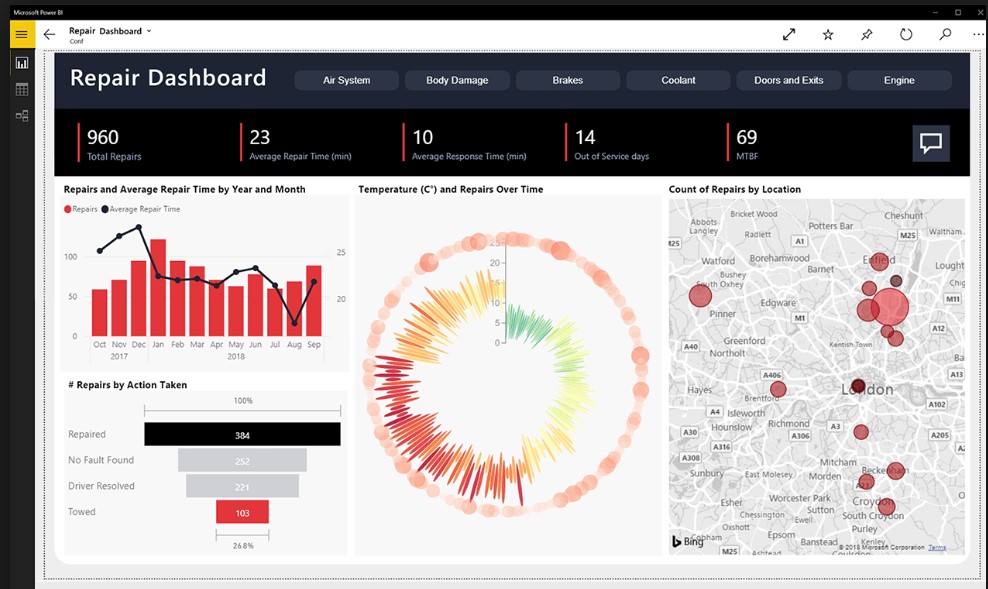
Figure 13. Power Bi report appearance with Extensions
The only thing I do not understand in Power BI is why they have such strange colors by default. On any chart, I have to change the color to my corporate, corporate and am surprised at the standard colors.
Qlik Sense also depends on Extensions. The use of add-ons can change reports beyond recognition. You can also roll your theme and design.
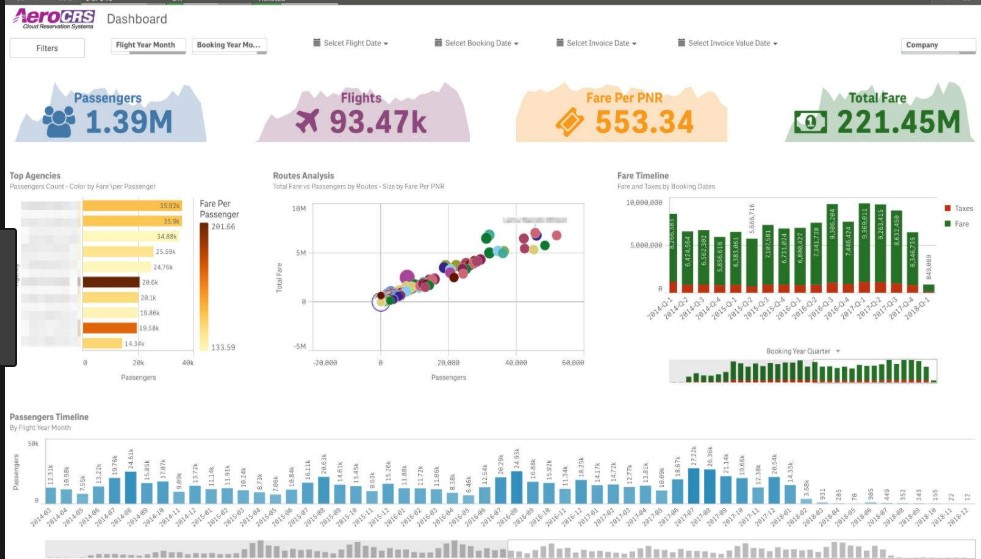
Figure 14. Appearance of Qlik Sense reports with Extensions
From a developer’s point of view, Qlik Sense is more convenient for me because of standard options such as alternative dimensions and measures. You can set several dimensions and measures in the visualization settings, and the user can easily set himself to look at this or that graph.
In Power Bi and Tableau, I have to adjust the parameters, buttons, and program the behavior of the system depending on these parameters. I wonder why it is so difficult. The same with the ability to change the look of Viluasilisations.
In Qlik, you can hide different types of visualizations in the same object, and in Power BI and Tableau, this is more difficult. Again, it depends more on the skill of the performer. It is possible to make a masterpiece in any system, and without experience everywhere, inexpressive graphs will be obtained.

All products have corporate server versions. I worked with all editors and I can say that everyone has strengths and weaknesses. Product selection should be selected from your software requirements, taking into account their nuances. All vendors can be distributed rights at the level of accounts and groups, and at the level of Data Row Level Security. Available automatically update reports on schedule.
Qlik Sense Enterprise is a great opportunity to build analytics inside your organization for medium-sized businesses. This may seem more expensive than Power BI Pro, but do not forget that the Power BI Pro servers are located in the cloud on the Microsoft territory and you cannot influence the performance, and when you need Power BI Premium that can be deployed on your servers, then The price starts from $ 5000 per month.
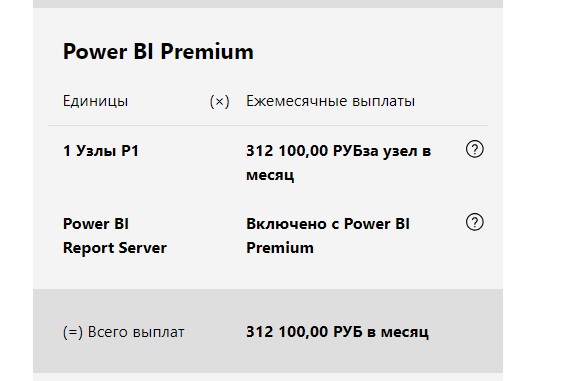
Qlik Sense Enterprise starts at 230,000 rubles. for 5 licenses (fee per year, then only technical support), which is much more affordable than Power BI Premium. And Qlik Sense Enterprise allows you to take full advantage of Qlik. Perhaps except for one. For some reason, Qlik decided that such a function as the ability to send reports to PDF via e-mail should be delivered as a separate service NPrinting.
But Qlik Sense Enterprise is more powerful than Power BI Pro and therefore the following comparison can be made here.
Qlik Sense Enterprise = Power BI Premium, with equal opportunities, it turns out cheaper with average implementations. Large-scale implementations are usually calculated on the vendor’s side; they can provide individual conditions for your company.
In this regard, we will give preference to Qlik Sense Enterprise, there are all the possibilities to build a serious analytics on huge data. In our opinion, Qlik will run faster than Power BI on large arrays, clients came to Qlik conferences, who initially tested their data in billions of records and Power BI showed worse results.
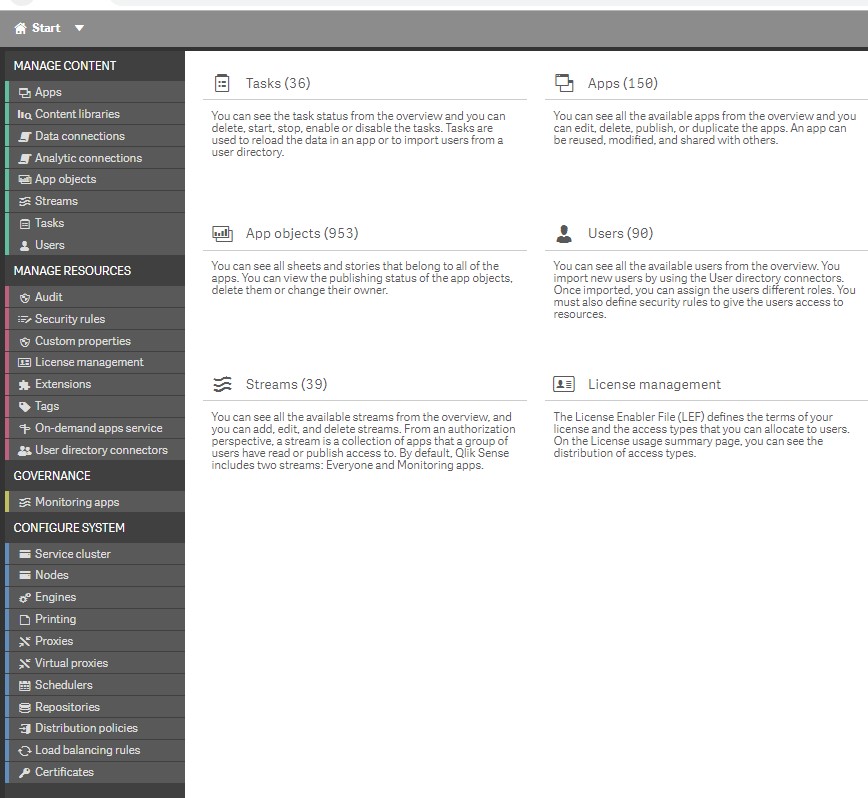
Figure 15. Appearance of Qlik Sense Enterprise server reports
Qlik Sense Cloud = Power BI Pro. Qlik Sense Cloud is 1.5 times more expensive * and there is a very significant limitation that this platform does not allow us. You cannot use extensions, even embedded ones. And without extensions, Qlik is losing some of its visual beauty.
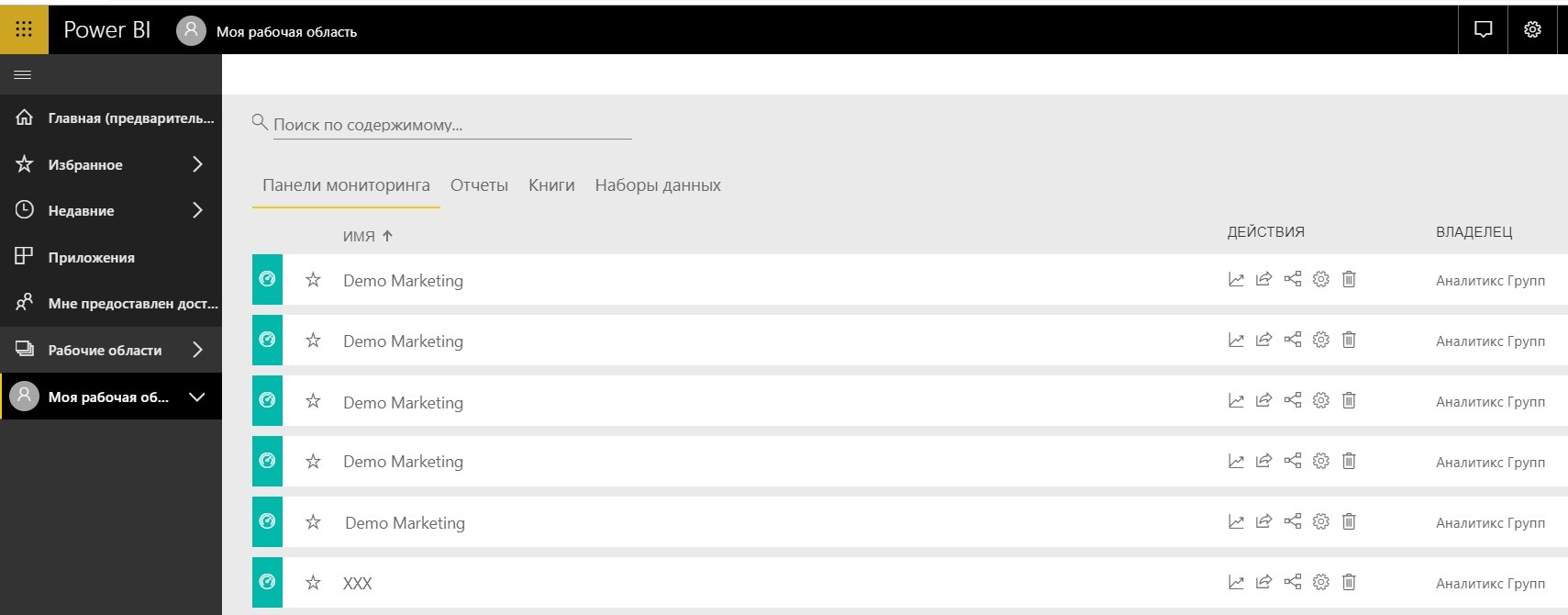
Figure 16. Power BI Pro control panel view
And Tableau stands a little apart for us. They have both cloud subscriptions for $ 70 per developer and $ 15 for viewing, as well as expensive server solutions. But the main idea of Tableau is that for big data it is necessary to organize data processing and storing it on the side. Objectively less functionality does not allow for serious data processing in Tableau. Visualize, analyze, yes. But for small and medium businesses, it is usually problematic to create a separate storage. I would have underestimated the ball for the Tableau, therefore, if it were not for their 1 chip. Tableau Server no problem sends emails on a schedule with attachments in CSV or PDF. And you can do the distribution of rights, autofilters and more. Power BI and Qlik for some reason cannot do this, and for some it may be critical. Due to this, Tableau maintains its position in our dispute.

Figure 17. Appearance of the Tableau Server control panel
Also in the corporate environment, you need to think about the cost of implementation and maintenance. In Russia, the practice has developed that Power BI is more common in small businesses. This led to the emergence of a large number of vacancies and resumes, the emergence of small integrators. This will allow to find specialists for a small project. But most likely all of them will not have experience of large implementations and work with big data. Qlik and Tableau vice versa. There are few Qlik partners, and Tableau and even fewer. These partners specialize in large implementations with a large average check. There are not many vacancies and summaries on the market; the threshold for entering these products is more complicated than in Power BI. But in Russia there are successful implementations of these products for thousands of users, and these products show themselves well on big data. You just need to understand the strengths and weaknesses of the products in relation to your business.

In this section, we will highlight Power BI and Tableau. You can install mobile applications and they will look quite adequately on the screens of mobile devices. Although it seems to us analytics on mobile devices loses analytics on a PC. All the same, it is not so convenient to use filters, the pictures are small, the numbers are hard to see, etc.
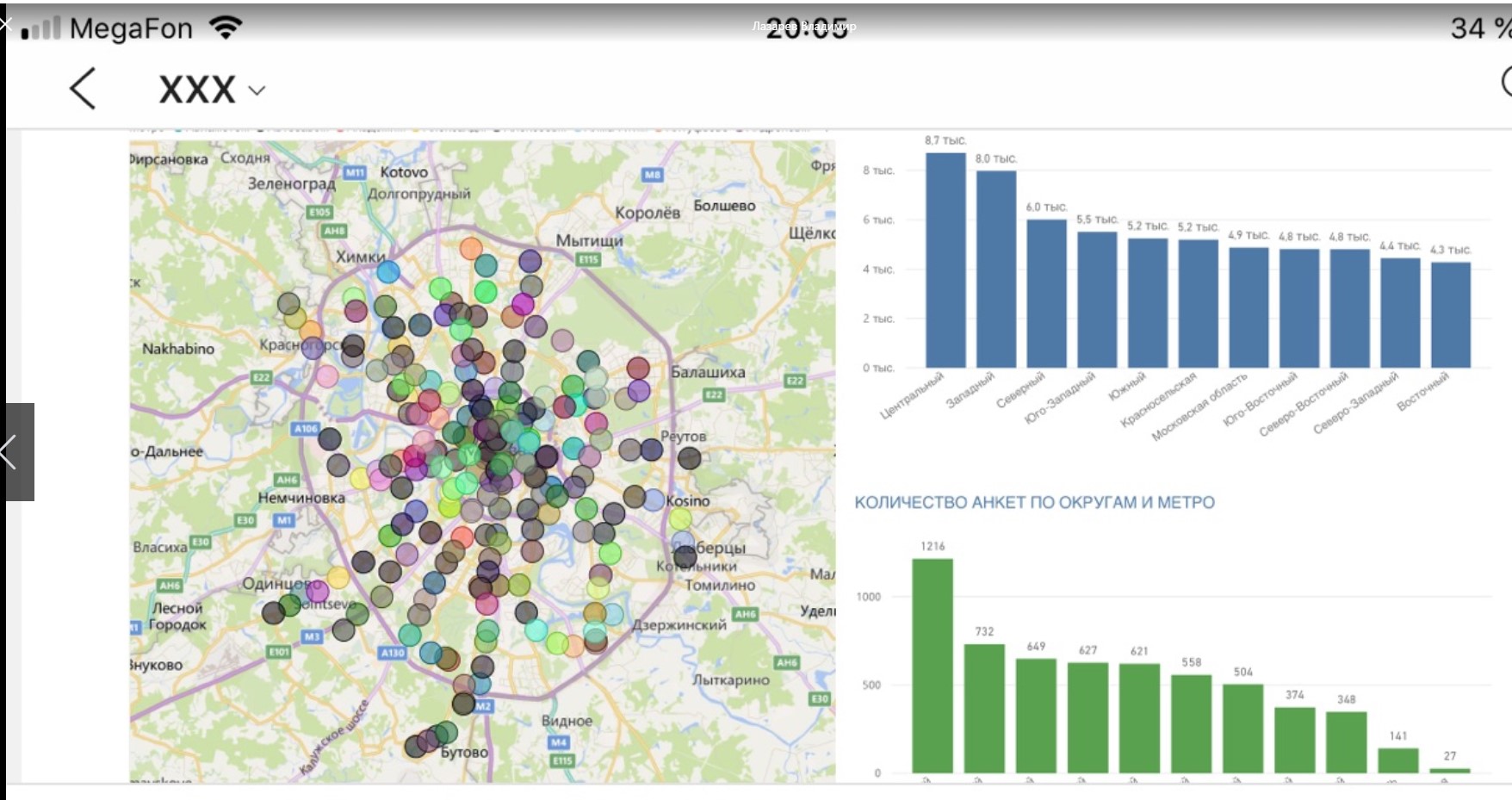
Figure 18. Power BI report appearance on iPhone
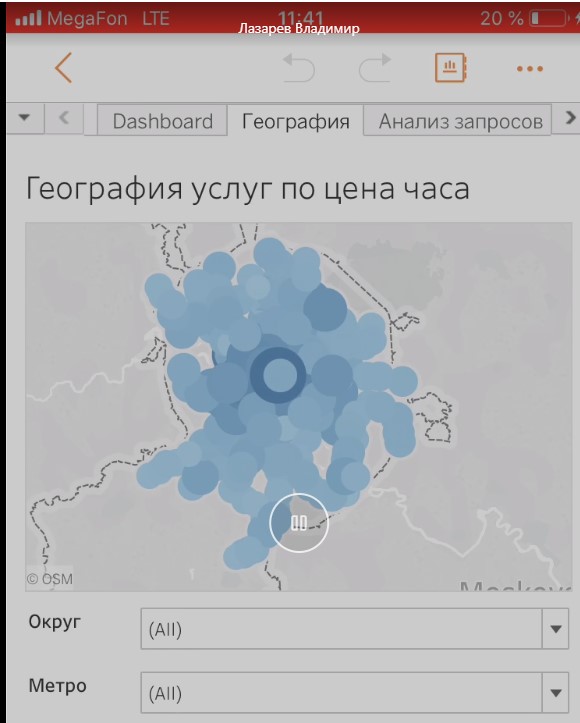
Figure 19. Tableau report appearance on iPhone
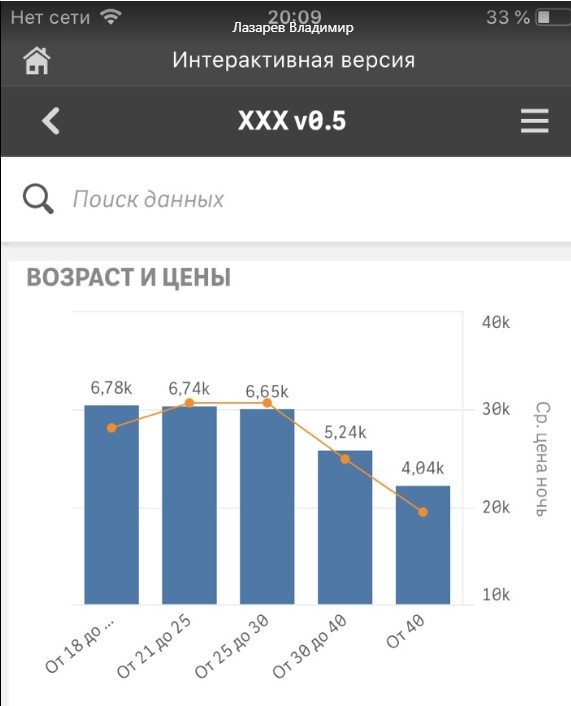
Figure 20. Appearance of Qlik Sense report on iPhone
Why lowered Qlik points? For reasons we do not understand, the mobile client is available only on the iPhone, on Android you will have to use a regular browser. Plus, when using Qlik, you immediately have to understand that a number of Extension or visualizations are not reduced or auto positioned in mobile devices as expected. A report that looks very nice in a PC looks much worse on a small screen. It is necessary for mobile devices to make a separate report, where to remove filters, KPI and a number of objects. This also applies to Power BI or Tableau, but is particularly evident in Qlik. We hope Qlik will still work on its mobile client.
If you have a lot of time you plan to conduct analytics from mobile devices, it makes sense to put all 3 clients and test their display on test reports. Any vendor on its website has a gallery of test reports for review.

Using analytics as a third-party service is not always convenient. Perhaps you are developing your product, but are not ready to start developing a visualization and analytics engine from scratch. Perhaps you want to deploy analytics on your website so that the client can register himself, upload his data and conduct analysis within his personal account. To do this, you need embedded analytics (Embedded).
All products allow you to do this, but in this category we will highlight Qlik.
Power Bi and Tableau unequivocally say that for such purposes you need to buy a separate product, the Tableau Embedded Analytics or Power BI Embedded. These are not cheap solutions in thousands of dollars per month, which immediately limits their use. Most projects immediately become unprofitable for our clients. It is meant that you need not only to publish a report on the entire Internet, but to ensure the publication of reports according to certain accesses, with data protection, user authorization, etc.
And Qlik will allow you to get out. Of course, they also have the Qlik Analytics Platform, which is licensed to the server and organizes an unlimited number of connections. It will also be expensive as the competitors of Tableau and Power Bi. And in the case of unlimited connections, there are no special options.
But in Qlik there is such a thing as Mashup. Suppose you have Qlik Sense Enterprise and 10 licenses. Standard analytics, appearance, everything is already tired. You raise your own website or application, and you can implement all your analytics right there. The trick is, to put it simply, Mashup is a visualization in the program code. By API, you can programmatically set the creation of a visualization inside your application or site. You will still need Qlik Sense Enterprise for licensing (licenses for connections to the site = licenses for connections to BI), for downloading data, etc., but visualizations will not be displayed on the server side, but will be integrated into your application or site. You can use CSS styles, set new fonts, colors. Your 10 users will no longer go to the analytics server, but will use your corporate portal or application. Analytics will reach a new level.

Figure 21. The appearance of the Qlik Sense report embedded on the website
It will be difficult to understand where the elements of the site are, and where Qlik Sense already begins.
Of course, you will need a programmer, and even rather a few. One for web programming, one for working with the Qlik API. But the result is worth it.
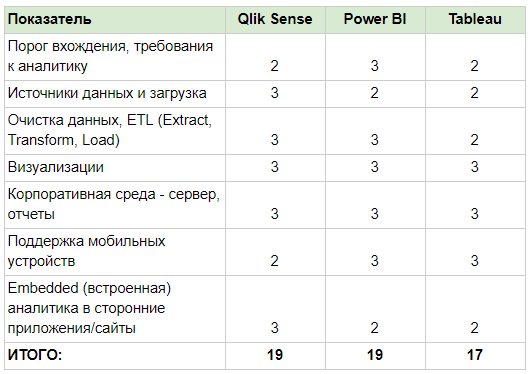
It is difficult to say unequivocally who is better and who is worse. Power BI and Qlik in our competition are on a par, Tableau is slightly inferior. But perhaps the result for your business will be different. In BI platforms, the visual component is very important. If you have watched dozens of demo reports and images on the Internet for all BI systems and you don’t like how one of the platforms looks like, then most likely you will not implement it, even if you are satisfied with the price or those. specifications.
Next, you will definitely need to calculate the cost of licenses, implementation and maintenance of the BI platform. Perhaps in your case the leader will be revealed. Of great importance is the contractor or the ability to hire the right specialist. Without professionals in any platform, the result will be disastrous.
Successful BI-integrations to you, Andrey Zhdanov and Lazarev Vladimir, Analytics Group
We and Gartner Square 2019 BI :-)
The purpose of this article is to compare the three leading BI platforms that are among the leaders of the Gartner quadrant:
- Power BI (Microsoft)
- Tableau
- Qlik

Figure 1. Gartner BI Magic Quadrant 2019
My name is Zhdanov Andrey, I am the head of the analytics department at Analytics Group. We build visual reports on marketing, sales, finance, logistics, in other words, we are engaged in business analytics and data visualization.
')
I have been working with various BI platforms for several years with my colleagues. We have a very good project experience, which allows us to compare platforms from the point of view of developers, analysts, business users and implementers of BI systems.
We will have a separate article comparing prices and visual design of these BI systems, so here we will try to evaluate these systems from the point of view of the analyst and the developer.
We will single out several directions for analysis and estimate it on a 3-point scale:
- The threshold of entry and requirements for the analyst;
- Data sources;
- Data Cleansing, ETL (Extract, Transform, Load)
- Visualization and development
- Corporate environment - server, reports
- Mobile support
- Embedded analytics in third-party applications / sites
1. Entry threshold and requirements for the analyst

Power BI
I saw a lot of Power BI users who were not IT specialists, but could create a nice report. Power BI uses the same query language as Excel — Power Query and the DAX formula language. Many analysts are well aware of Excel, so it’s pretty easy for them to switch to this BI system.
Most actions are not difficult enough to be performed in the query editor. Plus there is an advanced editor with the M language for professionals.

Figure 2. Power BI Query Designer
Qlik Sense
Qlik Sense looks very friendly - a small number of settings, a quick opportunity to create a report, you can use the data load designer.
At first, it seems simpler than Power BI and Tableau. But from experience I will say that after a while, when the analyst creates a couple of simple reports and he needs something more complicated, he will be faced with the need to program.
Qlik has a very powerful language for loading and processing data. There is own set analysis formula language. Therefore, the analyst should be able to write queries and connections, place data in virtual tables, actively use variables. The possibilities of the language are very broad, but it will require its study. Probably all Qlik analysts that I know have some serious IT background.
Qlik integrators, like us, often like to talk about the associative model, when loading data all fit into RAM, and the connection between the data is performed by the platform’s internal mechanism. With the selection of values, internal subqueries are not produced, as in classical databases. Data is provided almost instantly due to pre-indexed values and relationships.
True in practice, this leads to the creation of automatic joins of tables, with the coincidence of field names. For example, you can not have different tables without links, which will have the same field. It is necessary to get used to this. It is necessary either to rename the columns and make sure that the names do not match, or to reduce all the fact tables into one and surround them with directories of the “star” type. Likely for beginners it is convenient, and experienced analysts have no difference.
A typical interface for loading and processing data for analytics looks like this.

Figure 3. Qlik Sense Data Download Editor, Calendar table
Note: In Power BI, the situation usually looks different; you leave different fact tables and reference books; you can manually join the tables in the classical way, i.e. I map the columns to each other manually.
Tableau
Tableau developers are positioning as a BI with a convenient and user-friendly interface that will allow the analyst to independently explore their data. Yes, we had analysts in our company who, without IT experience, could make their reports. But I will lower the assessment of Tableau for several reasons:
- Weak localization with the Russian language
- Tableau Online servers are not in RF
- A fairly simple download constructor starts causing problems when you need to build a rather complex data model.

Figure 4. Tableau data load constructor
One of the questions we ask at the interview for Tableau analysts is “How to build a model of fact tables with reference tables without putting everything in a single table?” Data Blending requires thoughtful use. I have many times corrected data duplication errors for my analysts after such associations.
Plus, Tableau has a rather peculiar system, when you make each schedule on a separate sheet of Sheet, and then create a Dashboard, where you start to place the created sheets. Then you can create a Story, a combination of different Dashboard. Development in Qlik and Power BI in this regard is simpler, you immediately put graph templates on a sheet, set measures and measurements, and the Dashboard is ready. It seems to me that labor costs for training in Tableau are increasing.
2. Data Sources and Downloads

There is no clear leader in this section, but we will highlight Qlik due to a couple of nice features.
Tableau in the free version is limited in sources, but in our articles we focus more on business, and business can afford commercial products and analysts. Therefore, Tableau did not lower the estimate for this parameter.

Figure 5. A list of possible Tableau sources
Otherwise, the list of sources is impressive everywhere - all table files, all standard databases, web connections, everything works everywhere. I did not come across non-standard data storages, there may have some nuances, but in most cases you will not have problems loading data. Exception, perhaps only 1C. There are no direct connectors to 1C.
Qlik partners in Russia sell their own connectors for 100,000 - 200,000 rubles, but in most cases it is cheaper to make 1C uploads to FTP to Excel or a SQL database. And you can publish the 1C database on the web and connect to it using the Odata protocol.
PowerBI and Tableau can do it as standard, but Qlik will be asked for a paid connector, so it's also easier to upload to an intermediate database here. In any case, questions all questions on connections can be solved.

Figure 6. A list of possible sources of Qlik Sense
In addition, it is worth noting the feature of Qlik that they deliver both paid and free connectors as a separate product.

Figure 7. Additional Qlik Sense connectors
From experience I will add that with large amounts of data or numerous sources it is not always advisable to connect immediately a BI system. In serious projects, a data warehouse, a database with data already prepared for analysis, etc. are usually used. You can not take and unload say, 1 billion records in the BI system. There is already a need to think through the solution architecture.


Figure 8. Power BI data sources
But why did you allocate Qlik? I really like 3 things:
- QVD files
Own data storage format. Sometimes you can build serious commercial projects only on QVD files. For example, the first level is raw data. The second level is the processed files. The third level is aggregated data, etc. These files can be used in different applications, they can be responsible for different employees and services. Download speed from such files is ten times faster than from normal data sources. This allows you to save on the database and share information between different Qlik applications.
- Incremental data loading
Yes, Power BI and Tableau can also do this. But Power BI will require an expensive Premium version, and Tableau doesn’t have the same flexibility as Qlik. In Qlik on QVD files, you can take system snapshots at different times and then process this data as you please.
- Connect external scripts
In addition to QVD files for data storage, in Qlik script code can also be taken out of the application and included with the Include command. This allows you to organize team work, use version control systems, manage a single code for different applications. Power BI has an advanced query editor, but we didn’t manage to configure such a teamwork as in Qlik. In general, all BI have problems with this; it is simply impossible to manage data, code, and visualizations in all applications simultaneously from a single place. The maximum that we managed to do was to render the QVD files and script code. Visual elements have to be edited within the reports themselves, which does not allow us to massively change the visualization of all clients at the same time.
But what about such a mechanism as Live connection? Tableau and Power BI support a LIVE connection to a number of sources, unlike Qlik. We treat this feature rather indifferently, since Practice shows that when it comes to big data, working with a LIVE connection becomes impossible. And BI is in most cases necessary for big data.
3. Data Cleansing, ETL (Extract, Transform, Load)

In this section I have 2 leaders, Qlik Sense and Power Bi.
Let's just say Qlik is powerful, but difficult. Understand their SQL in a similar language and you can do almost everything — virtual tables, joins and join tables, loop through the table and generate new tables, a bunch of row processing commands. For example, a field in 1 cell that is clogged with data like “Ivanov 851 White” on the fly can be decomposed not only into 3 columns (as everyone can do), but also into 3 lines at once, for example. The same on the fly to make combining 3 lines into 1 is also easy.

Figure 9. How to load and transpose a table into Qlik Sense from Google Sheets
Power BI in this regard seems simpler, but most of the tasks are easily solved through the query designer. He set a number of parameters, transposed the table, worked on the data, and all this without a single line of code.

Figure 10. How to load and transpose a table in Power BI from AmoCRM
Tableau seems to me to have a different ideology. They are more for beauty and design. Connect a bunch of different sources, combine them all and handle inside Tableau seems to me very difficult. In commercial projects, in most cases, Tableau already prepares and accumulates data in storages and databases.

Figure 11. How to load and transpose a table in Tableau
4. Visualization

In this section, we did not select a leader. We will have a separate article, where, using the example of one case, we will show the same report in all 3 systems (Article “Analytics of girls with low social responsibility„) . There is more to do with the taste and skill of the analyst. On the Internet you can find very beautiful pictures, built on the basis of any of these systems. The basic visualization capabilities are about the same for everyone. The rest is solved using Extensons. There are paid, free. There are extensions from the vendors themselves, as well as from freelancers and integrators. You yourself can write your own visualization extension for any platform.
I like the Tableau style, I consider it strict and corporate. But getting a really beautiful picture in Tableau is hard. A great example of the visualization of the Tableau, where some extensions are used. I can not repeat that, because I do not have these extensions, but it looks beautiful.

Figure 12. Tableau reports appearance with Extensions
Power BI can also be made interesting.

Figure 13. Power Bi report appearance with Extensions
The only thing I do not understand in Power BI is why they have such strange colors by default. On any chart, I have to change the color to my corporate, corporate and am surprised at the standard colors.
Qlik Sense also depends on Extensions. The use of add-ons can change reports beyond recognition. You can also roll your theme and design.

Figure 14. Appearance of Qlik Sense reports with Extensions
From a developer’s point of view, Qlik Sense is more convenient for me because of standard options such as alternative dimensions and measures. You can set several dimensions and measures in the visualization settings, and the user can easily set himself to look at this or that graph.
In Power Bi and Tableau, I have to adjust the parameters, buttons, and program the behavior of the system depending on these parameters. I wonder why it is so difficult. The same with the ability to change the look of Viluasilisations.
In Qlik, you can hide different types of visualizations in the same object, and in Power BI and Tableau, this is more difficult. Again, it depends more on the skill of the performer. It is possible to make a masterpiece in any system, and without experience everywhere, inexpressive graphs will be obtained.
5. Corporate environment - server, reports

All products have corporate server versions. I worked with all editors and I can say that everyone has strengths and weaknesses. Product selection should be selected from your software requirements, taking into account their nuances. All vendors can be distributed rights at the level of accounts and groups, and at the level of Data Row Level Security. Available automatically update reports on schedule.
Qlik Sense Enterprise is a great opportunity to build analytics inside your organization for medium-sized businesses. This may seem more expensive than Power BI Pro, but do not forget that the Power BI Pro servers are located in the cloud on the Microsoft territory and you cannot influence the performance, and when you need Power BI Premium that can be deployed on your servers, then The price starts from $ 5000 per month.

Qlik Sense Enterprise starts at 230,000 rubles. for 5 licenses (fee per year, then only technical support), which is much more affordable than Power BI Premium. And Qlik Sense Enterprise allows you to take full advantage of Qlik. Perhaps except for one. For some reason, Qlik decided that such a function as the ability to send reports to PDF via e-mail should be delivered as a separate service NPrinting.
But Qlik Sense Enterprise is more powerful than Power BI Pro and therefore the following comparison can be made here.
Qlik Sense Enterprise = Power BI Premium, with equal opportunities, it turns out cheaper with average implementations. Large-scale implementations are usually calculated on the vendor’s side; they can provide individual conditions for your company.
In this regard, we will give preference to Qlik Sense Enterprise, there are all the possibilities to build a serious analytics on huge data. In our opinion, Qlik will run faster than Power BI on large arrays, clients came to Qlik conferences, who initially tested their data in billions of records and Power BI showed worse results.

Figure 15. Appearance of Qlik Sense Enterprise server reports
Qlik Sense Cloud = Power BI Pro. Qlik Sense Cloud is 1.5 times more expensive * and there is a very significant limitation that this platform does not allow us. You cannot use extensions, even embedded ones. And without extensions, Qlik is losing some of its visual beauty.

Figure 16. Power BI Pro control panel view
* An alternative is to use Qlik Sense Enterprise on a subscription basis. But so that this article is not perceived as advertising, we will not cover our pricing.
And Tableau stands a little apart for us. They have both cloud subscriptions for $ 70 per developer and $ 15 for viewing, as well as expensive server solutions. But the main idea of Tableau is that for big data it is necessary to organize data processing and storing it on the side. Objectively less functionality does not allow for serious data processing in Tableau. Visualize, analyze, yes. But for small and medium businesses, it is usually problematic to create a separate storage. I would have underestimated the ball for the Tableau, therefore, if it were not for their 1 chip. Tableau Server no problem sends emails on a schedule with attachments in CSV or PDF. And you can do the distribution of rights, autofilters and more. Power BI and Qlik for some reason cannot do this, and for some it may be critical. Due to this, Tableau maintains its position in our dispute.

Figure 17. Appearance of the Tableau Server control panel
Also in the corporate environment, you need to think about the cost of implementation and maintenance. In Russia, the practice has developed that Power BI is more common in small businesses. This led to the emergence of a large number of vacancies and resumes, the emergence of small integrators. This will allow to find specialists for a small project. But most likely all of them will not have experience of large implementations and work with big data. Qlik and Tableau vice versa. There are few Qlik partners, and Tableau and even fewer. These partners specialize in large implementations with a large average check. There are not many vacancies and summaries on the market; the threshold for entering these products is more complicated than in Power BI. But in Russia there are successful implementations of these products for thousands of users, and these products show themselves well on big data. You just need to understand the strengths and weaknesses of the products in relation to your business.
6. Mobile device support.

In this section, we will highlight Power BI and Tableau. You can install mobile applications and they will look quite adequately on the screens of mobile devices. Although it seems to us analytics on mobile devices loses analytics on a PC. All the same, it is not so convenient to use filters, the pictures are small, the numbers are hard to see, etc.

Figure 18. Power BI report appearance on iPhone

Figure 19. Tableau report appearance on iPhone

Figure 20. Appearance of Qlik Sense report on iPhone
Why lowered Qlik points? For reasons we do not understand, the mobile client is available only on the iPhone, on Android you will have to use a regular browser. Plus, when using Qlik, you immediately have to understand that a number of Extension or visualizations are not reduced or auto positioned in mobile devices as expected. A report that looks very nice in a PC looks much worse on a small screen. It is necessary for mobile devices to make a separate report, where to remove filters, KPI and a number of objects. This also applies to Power BI or Tableau, but is particularly evident in Qlik. We hope Qlik will still work on its mobile client.
If you have a lot of time you plan to conduct analytics from mobile devices, it makes sense to put all 3 clients and test their display on test reports. Any vendor on its website has a gallery of test reports for review.
7. Embedded analytics in third-party applications / sites

Using analytics as a third-party service is not always convenient. Perhaps you are developing your product, but are not ready to start developing a visualization and analytics engine from scratch. Perhaps you want to deploy analytics on your website so that the client can register himself, upload his data and conduct analysis within his personal account. To do this, you need embedded analytics (Embedded).
All products allow you to do this, but in this category we will highlight Qlik.
Power Bi and Tableau unequivocally say that for such purposes you need to buy a separate product, the Tableau Embedded Analytics or Power BI Embedded. These are not cheap solutions in thousands of dollars per month, which immediately limits their use. Most projects immediately become unprofitable for our clients. It is meant that you need not only to publish a report on the entire Internet, but to ensure the publication of reports according to certain accesses, with data protection, user authorization, etc.
And Qlik will allow you to get out. Of course, they also have the Qlik Analytics Platform, which is licensed to the server and organizes an unlimited number of connections. It will also be expensive as the competitors of Tableau and Power Bi. And in the case of unlimited connections, there are no special options.
But in Qlik there is such a thing as Mashup. Suppose you have Qlik Sense Enterprise and 10 licenses. Standard analytics, appearance, everything is already tired. You raise your own website or application, and you can implement all your analytics right there. The trick is, to put it simply, Mashup is a visualization in the program code. By API, you can programmatically set the creation of a visualization inside your application or site. You will still need Qlik Sense Enterprise for licensing (licenses for connections to the site = licenses for connections to BI), for downloading data, etc., but visualizations will not be displayed on the server side, but will be integrated into your application or site. You can use CSS styles, set new fonts, colors. Your 10 users will no longer go to the analytics server, but will use your corporate portal or application. Analytics will reach a new level.

Figure 21. The appearance of the Qlik Sense report embedded on the website
It will be difficult to understand where the elements of the site are, and where Qlik Sense already begins.
Of course, you will need a programmer, and even rather a few. One for web programming, one for working with the Qlik API. But the result is worth it.
Findings. Let's sum up.

It is difficult to say unequivocally who is better and who is worse. Power BI and Qlik in our competition are on a par, Tableau is slightly inferior. But perhaps the result for your business will be different. In BI platforms, the visual component is very important. If you have watched dozens of demo reports and images on the Internet for all BI systems and you don’t like how one of the platforms looks like, then most likely you will not implement it, even if you are satisfied with the price or those. specifications.
Next, you will definitely need to calculate the cost of licenses, implementation and maintenance of the BI platform. Perhaps in your case the leader will be revealed. Of great importance is the contractor or the ability to hire the right specialist. Without professionals in any platform, the result will be disastrous.
Successful BI-integrations to you, Andrey Zhdanov and Lazarev Vladimir, Analytics Group
Source: https://habr.com/ru/post/444758/
All Articles